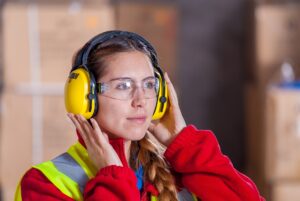Ventilation systems help keep facilities cool, comfortable, and safe. They help protect workers from extreme temperatures and also help facilitate removing contaminants from the air. However, they can also be quite noisy. Excessive noise can cause a lot of trouble for your facility, such as permanent hearing loss for workers, safety concerns, and other issues. Therefore, you may need ventilation system noise control from ventilation and acoustic specialists.
How Does Ventilation System Noise Control Work?
What is noise? Noise is essentially sound we don’t want to hear, usually because the sound is irritating or too loud. Sound waves are essentially vibrations that travel through the air to our ears, and, in fact, sound waves travel quite similarly to how air flows through a building.
In order to help with ventilation system noise control, you can break down noise into three parts: source, path, and receiver. The source of the noise is the actual thing making the sound. For example, say a large industrial fan. The path is how the sound waves travel through the area to the person who hears the noise. Finally, the receiver is the person who can hear the noise.

With any noise problem, there are opportunities to reduce noise at each of these different stages. For instance, reducing noise at the source might mean choosing quieter equipment or turning the settings down. To help reduce noise along its path, you might install devices that interrupt or absorb the waves before they can reach the receiver. Finally, often as a last resort, you can reduce noise at the receiving end by providing hearing protection to workers in your facility.
In most cases, you want to help reduce noise in industrial and commercial ventilation systems before it reaches the receiver. To do so, an acoustic specialist can help evaluate noise and find solutions for your needs.
Custom Noise Attenuation Solutions for Industrial Ventilation Systems
There are many ways an acoustic specialist can help control noise from your ventilation system. Acoustic design is one way. Acoustic design involves engineering a ventilation system that takes sound into account. For instance, during the design phase, if the acoustic specialist realizes there might be a noise problem, they might choose quieter equipment or place it further away from occupied spaces. In addition, they may include special noise control equipment when needed to help stop noise before you ever even hear it.
It’s also possible to control noise in existing systems, typically using special noise attenuating devices and equipment. Some of these include:
- Ventilation silencers for fans, vents, and ducts
- Acoustic louvers
- Sound absorbing barriers
- Air exhaust mufflers
- Noise control enclosures
Determining the type of noise control equipment you need depends on many factors. There is no one-size-fits-all solution for ventilation system noise, which is why it’s best to consult with an acoustic specialist for a noise evaluation.
Eldridge: One of the Industry-Leading Ventilation and Noise Control Companies
When you need ventilation and noise control solutions, contact our team at Eldridge. We’ve been one of the nation’s most trusted ventilation and noise companies since 1946. Our experts have provided innovative solutions for countless problems, from ventilation on marine vessels to noise control systems for industrial equipment. Contact us now to set up a free consultation and get a no-obligation quote!
